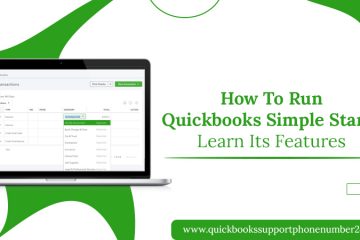Record A QuickBooks Bounced Check Online- 5 Easiest Steps

 When you deposit a check that your customer has given you and there are not sufficient funds in their bank account, the check will return to the bank because of the non-sufficient funds to pay the check amount. This is a bounced check that can be a real annoyance to keep track of on your books. Your bank will charge a fee from you for a bounced check. And you have to contact your customer to notify them that their check has bounced and you have to request another form of payment. So here are the easiest steps on how to record a bounced check in QuickBooks Online. For technical assistance, contact the QuickBooks support phone number. Experts will resolve your issue in no time.
When you deposit a check that your customer has given you and there are not sufficient funds in their bank account, the check will return to the bank because of the non-sufficient funds to pay the check amount. This is a bounced check that can be a real annoyance to keep track of on your books. Your bank will charge a fee from you for a bounced check. And you have to contact your customer to notify them that their check has bounced and you have to request another form of payment. So here are the easiest steps on how to record a bounced check in QuickBooks Online. For technical assistance, contact the QuickBooks support phone number. Experts will resolve your issue in no time.
Significance of Recording a QuickBooks Bounced Check
It is important to record a QuickBooks Bounced Check because it will not only impact your bank account but also your accounts receivable (A/R) balance and expenses. To reconcile your bank account, you must record the returned check and any additional fees that the bank charges. Also, reverse the customer’s payment to increase your A/R balance.
When a customer’s check bounces, it has the following effect.
- Bank account: Your bank account will reduce the amount of bounced checks
- Accounts receivable: Your accounts receivable balance will increase if the customer’s payment did not go through
- Bounced check fees: The bank takes away from you a fee for non-sufficient funds (NSF fee)
5 Steps to Record a Bounce Check in QuickBooks Online
To suitably record a QuickBooks Bounced Check Online, you have to record the decrease to the bank account for the total amount of the check. After that, you have to record the non-sufficient funds (NSF) fee charged to the account by the bank. At last, you have to bill the customer back for the NSF fee. Billing the customer for the fee is upon your choice.
Follow the below five steps to record check-bounce in QuickBooks Online
Record the Decrease in the Bank Balance
In this first step, you have to navigate to the “Write Checks” window to get the decrease in the bank balance for the total amount of the bounced check. Bank usually deducts the amount from your bank account that’s why we have to record it in QuickBooks.
From the Homepage, tap on the plus sign located at the top, and under the “vendors” column, go for the “Check” option.
A short description of the information that you will provide is given below
- Payee: From the drop-down menu, choose the customer whose check is bounced
- Bank account: From the drop-down menu, choose the bank account where the check bounced.
- Payment date: Write the date the check was returned.
- Account: From the drop-down menu, choose accounts receivable.
- Description: Provide the bounced check information.
- Memo: Write any additional information about the customer’s bounced check.
- Amount: Give the amount of the bounced check.
- Check no: Enter NSF in this empty field.
- Save: Save and close the check window.
Read More: How to Fix QuickBooks not Showing Mapped Drives Problem?
Navigate to the Expense Menu
From the Homepage, tap on the plus sign at the top, and under the Vendors column, select the “Expense” option.
Record the NSF Fee Expense in the QuickBooks Online
In this step, record the NSF fee that is charged by the bank for the bounced check. The NSF Fee will feed into the QuickBooks as an expense. To record an expense you have to write the name of the payee. You also have to write a reference number, a brief description, and the total amount.
The information you have to provide to record the NSF fee is:
- Payee: From the drop-down menu, choose your bank.
- Bank account: From the drop-down menu, choose the bank account where the check bounced.
- Payment date: Write the date the check was returned.
- Ref no: Provide “Bank NSF Fee” in this field as your reference number.
- Account: From the drop-down menu, choose the expense account you use to track bank fees.
- Description: Write the “NSF fee” in this field as a description.
- Amount: Enter the total amount the bank charged you for the check-bounce.
- Save: Once all fields are done, click on save and then close this window.
Navigate to Invoices in QuickBooks Online
This step is optional. Though, experts recommend billing your customer for the NSF fee that you were charged by the bank. Particular businesses charge a little more just for the untimeliness, but that is totally up to you.
Bill the Customer for the NSF Fee
To bill your customer for the NSF fee, you have to create an invoice in QuickBooks.
Complete the given fields in the invoice form to bill the customer for the NSF fee.
- Customer: From the drop-down menu, choose the customer who bounced the check.
- Invoice date: Choose the date that you want to bill your customer for this fee.
- Product or service: To track customer NSF fees, set up a service called “Customer NSF fee”. From the drop-down menu, hit on “Add New” and fill in the following fields to set up this fee.
- Item Type: From the drop-down menu, choose “service.”
- Item description: Write in “Customer NSF Fee.”
- Income account: From the drop-down menu, choose “other income.” If you do not have another income account set up, you can do so by hitting the “add new” option
- Description: Attach a description of the check that was returned so that the customer should know what this fee is for.
- Amount: Write the amount you are charging your customer for the bounced check (NSF fee with any additional inconvenience fee).
- Message to display on the invoice: Incorporate a message to your customer that has to appear on the invoice as to why they are being charged the fee.
- Save: When all the fields are completed, click on save and close the invoice.
Also Read: Common QuickBooks Payroll Problems and their Solutions
Influence of Recording QuickBooks Bounced Checks on Financial Statements
Check-bounce can impact some accounts and a couple of key financial statements. Accounts receivable will rise as the invoice is no longer paid. Your cash on deposit will decrease because the funds have been taken out from your bank account. Additionally, your expenses will increase because of the NSF fee. Consequently, both the balance sheet report and the profit and loss statement area will when recording QuickBooks check-bounce.
For technical assistance, dial the QuickBooks Technical Support phone number so that experts will help you out with any of your technical problems.

